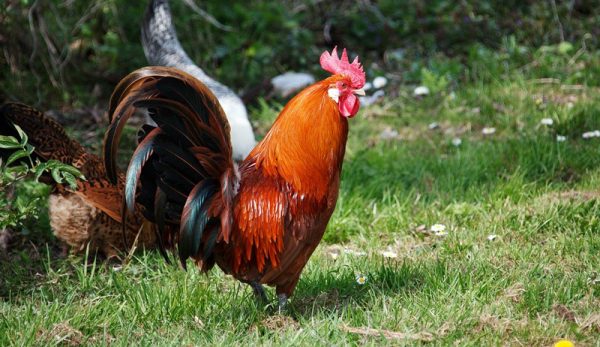
There comes a sad time in all our lives when a favorite hen or rooster passes on, arriving at the fabled rainbow bridge to await the day we can cross together into sunnier pastures.
While their avian spirits might now soar free, their earthly remains require prompt attention. Giving your beloved bird a proper burial goes without saying but, before you grab your shovel, read through our guidelines to ensure your send-off is stress free.
Check Your Local Ordinances
Most cities and towns have very specific regulations regarding the disposal of animal remains. Some municipalities have separate ordinances for pets and for livestock. Others have one regulation that covers all carcasses.
Before burying a chicken, review your local laws to ensure your burial plans fall in line with what your town allows. Ordinances might regulate:
- At what distance from existing structures and property lines you can bury an animal
- How close you can get to wells or bodies of water
- Whether animal burial is even permitted in your area
If the home burial is not allowed, you may wish to contact a local veterinarian to learn about such options as cremation or pet-specific cemeteries.
Read this author’s account of the recent loss of a beloved rooster.
Contact Your Utilities
I cannot emphasize how important it is to reach out to your local utilities office prior to digging.
These days, everything runs underground: natural gas, water lines, fiberoptic cables, electricity, you name it. Your neighbors will be less than happy with you if you interrupt everyone’s Internet connectivity because you accidentally snapped a line burying Hennifer.
811 is the national number to call before you dig. You can also locate your state’s service online by searching for your state’s name plus 811.
Dig Deep
Once you’ve checked both your ordinances and utilities and have selected your burial site, the next crucial step is to dig deep when burying your chicken.
I would need more fingers and toes to count the number of times I’ve heard from heartbroken poultry (and pet!) owners who went to pay their respects the day following the funeral, only to find a dug-up hole and gnawed over remains … or no remains at all.
Predators have a sense of smell that far surpasses that of humans. If you bury your bird only 1 to 2 feet down, you can bet you’re providing dinner for the local wildlife.
Dig your burial pit to a minimum depth of at least 3 feet. If you stand in the hole and ground level is at your hip level, then you’ve reached that minimum. Don’t neglect to dig widely as well to avoid laying your rooster to rest standing up.
Dealing with the winter loss of a chicken presents certain, climate-specific challenges.
Final Preparations
Before the actual burial, remove any non-biodegrable items such as saddles, tags and leg rings from your bird.
Pour approximately one cup of lime (available at farm supply and hardware stores) into the burial pit to cover the bottom. Lay your bird to rest on top of the lime, then cover your bird with one more cup of lime. The lime will aid in decomposition and will also mask any smells that might attract carrion eaters.
Fill the hole completely in with soil and tamp it down firmly. You may want to stake a tarp on top of the hole or otherwise cover it up to minimize access for a few days—long enough for the soil to settle but short enough so that grass beneath does not bleach out from lack of sun. You may also wish to place a grave marker at the site, as it will blend back in with its surroundings after a few weeks.
Saying goodbye to a beloved animal is never easy. My hope is that these guidelines make burying your chicken easier and parting at least a somewhat sweeter sorrow.




